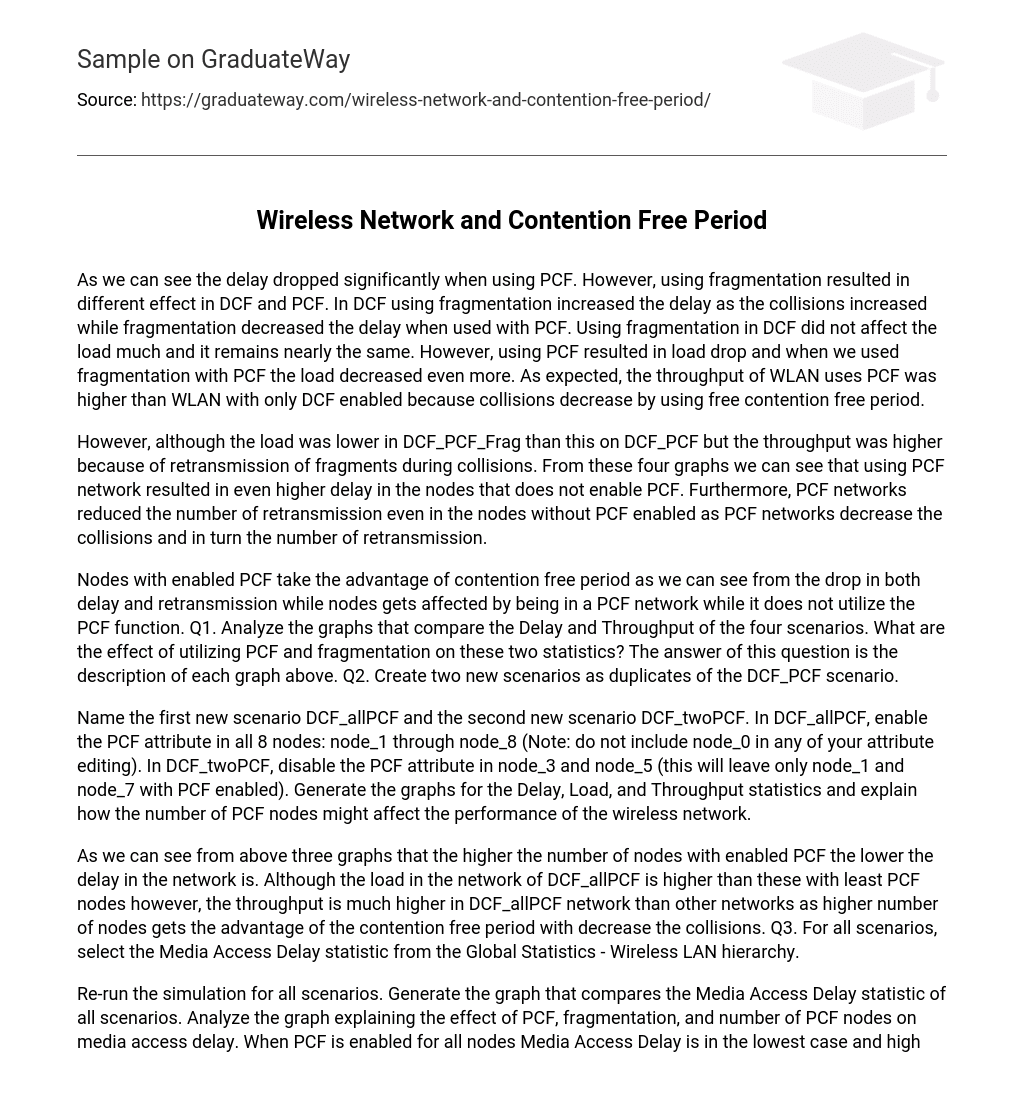As we can see the delay dropped significantly when using PCF. However, using fragmentation resulted in different effect in DCF and PCF. In DCF using fragmentation increased the delay as the collisions increased while fragmentation decreased the delay when used with PCF. Using fragmentation in DCF did not affect the load much and it remains nearly the same. However, using PCF resulted in load drop and when we used fragmentation with PCF the load decreased even more. As expected, the throughput of WLAN uses PCF was higher than WLAN with only DCF enabled because collisions decrease by using free contention free period.
However, although the load was lower in DCF_PCF_Frag than this on DCF_PCF but the throughput was higher because of retransmission of fragments during collisions. From these four graphs we can see that using PCF network resulted in even higher delay in the nodes that does not enable PCF. Furthermore, PCF networks reduced the number of retransmission even in the nodes without PCF enabled as PCF networks decrease the collisions and in turn the number of retransmission.
Nodes with enabled PCF take the advantage of contention free period as we can see from the drop in both delay and retransmission while nodes gets affected by being in a PCF network while it does not utilize the PCF function. Q1. Analyze the graphs that compare the Delay and Throughput of the four scenarios. What are the effect of utilizing PCF and fragmentation on these two statistics? The answer of this question is the description of each graph above. Q2. Create two new scenarios as duplicates of the DCF_PCF scenario.
Name the first new scenario DCF_allPCF and the second new scenario DCF_twoPCF. In DCF_allPCF, enable the PCF attribute in all 8 nodes: node_1 through node_8 (Note: do not include node_0 in any of your attribute editing). In DCF_twoPCF, disable the PCF attribute in node_3 and node_5 (this will leave only node_1 and node_7 with PCF enabled). Generate the graphs for the Delay, Load, and Throughput statistics and explain how the number of PCF nodes might affect the performance of the wireless network.
As we can see from above three graphs that the higher the number of nodes with enabled PCF the lower the delay in the network is. Although the load in the network of DCF_allPCF is higher than these with least PCF nodes however, the throughput is much higher in DCF_allPCF network than other networks as higher number of nodes gets the advantage of the contention free period with decrease the collisions. Q3. For all scenarios, select the Media Access Delay statistic from the Global Statistics – Wireless LAN hierarchy.
Re-run the simulation for all scenarios. Generate the graph that compares the Media Access Delay statistic of all scenarios. Analyze the graph explaining the effect of PCF, fragmentation, and number of PCF nodes on media access delay. When PCF is enabled for all nodes Media Access Delay is in the lowest case and higher when only few nodes are enabled PCF. This is because nodes with disabled PCF get the longest time of Media Access Delay. Furthermore using fragment in DCF decreased the Media Access Delay because every node uses the media for shorter time.





